6 common classification methods of grease
2019-10-15
Grease is commonly known as butter, which is a stable semi-solid product formed by dispersing thickeners in liquid lubricants. It is often necessary to add additives to improve some of its properties. In the product structure, domestic lubricating nausea has completed the transition from calcium-based greases with lower technical and quality levels to lithium-based greases with higher technical and quality levels. High-drop-point greases such as aluminum complex grease, overbased composite calcium sulfonate grease, and urea-based grease in the total output have shown an increasing trend year by year. At the same time, the development of some new high-end greases such as composite titanium-based greases, biodegradable greases, and nano-greases has also made important progress.
Various types of machinery and equipment have many names, their operating conditions and working environment are intricate, and their performance requirements are different. With the continuous development of grease manufacturing technology, the number of greases has also increased rapidly. The basis for classification of grease mainly includes two aspects: one is to specifically determine the grease consistency grade, that is, to distinguish the grade; the other is to make a detailed classification of the grease varieties.
(I) Classification by grease consistency grade
1. Grease cone penetration
Consistency refers to the softness and hardness of the grease, and its size is measured by the working penetration. Grease cone penetration value (also called penetration value) is the depth at which a standard cone of a specified quality passes into a grease sample at a specified time and temperature, in units of 1 / 10mm. The general test temperature is 25 ° C, and the time is 5s. An obtuse metal pointed cone is used. The larger the penetration value of the grease, the smaller the consistency, the softer the appearance, and the harder the appearance.
2. Consistency grade
The grease is divided into different consistency grades according to the operating range. This consistency grade that is currently used internationally was first proposed by the American Grease Association (NLGI), also known as the NLGI consistency classification. Although the consistency of some greases is not completely limited to the specified range, this consistency series reflects the consistency grades of most greases.
The NLGI consistency classification divides grease from 000 to 6 into 9 grades. The difference in penetration between each grade is 15 units. Among them, 0 #, 00 #, 000 # grease is called semi-fluid grease, which is mainly used for the lubrication of bearings, gears and various friction parts that should not be lubricated.
(II) classification by type of thickener
Depending on the thickener of the grease, it can be divided into soap-based and non-soap-based greases. Among them, soap-based greases can be divided into single soap-based greases, mixed soap-based greases, and compound soap-based greases. Non-soap-based greases include hydrocarbon-based greases, organic thickener greases, and inorganic thickener greases. .
(III) Classification by grease operating conditions
China released GB7631.8-1990 "Classification of Lubricants and Related Products (Class L) Part VIII: Group X (Grease)" in 1990. This standard is equivalent to the international standard ISO6743 / 9: 1987 "Lubricants, Industrial Lubricants and Related Products (Class L) Classification Part IX: Group X (Grease)". In this standard classification, there is only one code for a grease. This code should correspond to the most stringent operating conditions (temperature, water pollution, load, etc.) of the grease in the application. It consists of 5 capital English letters, each Each letter has its specific meaning. Among them, the letter L represents the category code of the lubricant and related products, the letter X represents the grease group, and the remaining 4 uppercase letters represent the performance level of the grease, which are the lowest operating temperature, the highest operating temperature, and the grease contamination in water. The water resistance and rust level under the operating conditions, the lubricity of the grease under high load or low load, the number indicates the consistency level.
For example, general lithium-based grease, according to its standards, we know:
Operating temperature: -20 ~ 120 ℃.
Water pollution: the amount of water leakage is not more than 10%, which means that it can withstand water washing; the anticorrosive property is level I, which can prevent rust under fresh water conditions.
Extreme pressure: There is no extreme pressure performance index in the index, that is, there is no extreme pressure.
From the above, it can be known that the letter 1 is the fixed code of grease, and the code is X; the minimum operating temperature is -20 ° C, the letter 2 is B; the maximum operating temperature is 120 ° C, and the letter 3 is C; Rustiness, letter 4 is H; load condition is non-extreme pressure type, letter 5 is A; consistency grade is 1 #, 2 #, 3 #. Therefore, the classification code of general-purpose lithium-based grease is L-XBCHA1,2,3.
Obviously, the classification of grease types is simplified according to GB / T7631.8, which is more scientific and reasonable, because according to this classification, it is easy to choose the appropriate grease according to the actual needs. Meet the operating conditions are optional. However, conventionally, methods classified by type of thickener are still used.
(IV) Classification by grease use
Classified according to the purpose of the grease, it can be divided into anti-friction grease, protective grease, seal grease, and anti-friction grease. Each of these classifications can be further subdivided according to whether it is dedicated or using temperature.
Among them, antifriction grease is a smaller branch. For example, the mine friction wheel hoist relies on the transmission power of wheels, pads and ropes to achieve the purpose of lifting, and the coal mine safety regulations have imposed mandatory requirements. In addition, the elevator rope also has the effect of increasing friction.
(V) Classification of Domestic Synthetic Grease
The classification of domestic synthetic grease is a four-digit Arabic number indicating a product. The ones that begin with "4" are oils and the ones that begin with "7" are lipids. The second digit indicates the use, and the last two digits indicate the serial number of the product.
(6) Other classification methods
Classified by industry: such as military grease, railway grease, ship grease, automotive grease, textile grease, mine grease, chemical grease, etc.
Classified by application equipment and parts: valve grease, bearing grease, reducer grease, etc .;
Classified by use temperature: low temperature grease, high temperature grease, etc .;
Classified by bearing performance: ordinary grease, extreme pressure grease, etc.
At present, our company's Kermo grease is basically subdivided according to the industry, application equipment parts, temperature, bearing capacity and other applications.
Various types of machinery and equipment have many names, their operating conditions and working environment are intricate, and their performance requirements are different. With the continuous development of grease manufacturing technology, the number of greases has also increased rapidly. The basis for classification of grease mainly includes two aspects: one is to specifically determine the grease consistency grade, that is, to distinguish the grade; the other is to make a detailed classification of the grease varieties.
(I) Classification by grease consistency grade
1. Grease cone penetration
Consistency refers to the softness and hardness of the grease, and its size is measured by the working penetration. Grease cone penetration value (also called penetration value) is the depth at which a standard cone of a specified quality passes into a grease sample at a specified time and temperature, in units of 1 / 10mm. The general test temperature is 25 ° C, and the time is 5s. An obtuse metal pointed cone is used. The larger the penetration value of the grease, the smaller the consistency, the softer the appearance, and the harder the appearance.
2. Consistency grade
The grease is divided into different consistency grades according to the operating range. This consistency grade that is currently used internationally was first proposed by the American Grease Association (NLGI), also known as the NLGI consistency classification. Although the consistency of some greases is not completely limited to the specified range, this consistency series reflects the consistency grades of most greases.
The NLGI consistency classification divides grease from 000 to 6 into 9 grades. The difference in penetration between each grade is 15 units. Among them, 0 #, 00 #, 000 # grease is called semi-fluid grease, which is mainly used for the lubrication of bearings, gears and various friction parts that should not be lubricated.
(II) classification by type of thickener
Depending on the thickener of the grease, it can be divided into soap-based and non-soap-based greases. Among them, soap-based greases can be divided into single soap-based greases, mixed soap-based greases, and compound soap-based greases. Non-soap-based greases include hydrocarbon-based greases, organic thickener greases, and inorganic thickener greases. .
(III) Classification by grease operating conditions
China released GB7631.8-1990 "Classification of Lubricants and Related Products (Class L) Part VIII: Group X (Grease)" in 1990. This standard is equivalent to the international standard ISO6743 / 9: 1987 "Lubricants, Industrial Lubricants and Related Products (Class L) Classification Part IX: Group X (Grease)". In this standard classification, there is only one code for a grease. This code should correspond to the most stringent operating conditions (temperature, water pollution, load, etc.) of the grease in the application. It consists of 5 capital English letters, each Each letter has its specific meaning. Among them, the letter L represents the category code of the lubricant and related products, the letter X represents the grease group, and the remaining 4 uppercase letters represent the performance level of the grease, which are the lowest operating temperature, the highest operating temperature, and the grease contamination in water. The water resistance and rust level under the operating conditions, the lubricity of the grease under high load or low load, the number indicates the consistency level.
For example, general lithium-based grease, according to its standards, we know:
Operating temperature: -20 ~ 120 ℃.
Water pollution: the amount of water leakage is not more than 10%, which means that it can withstand water washing; the anticorrosive property is level I, which can prevent rust under fresh water conditions.
Extreme pressure: There is no extreme pressure performance index in the index, that is, there is no extreme pressure.
From the above, it can be known that the letter 1 is the fixed code of grease, and the code is X; the minimum operating temperature is -20 ° C, the letter 2 is B; the maximum operating temperature is 120 ° C, and the letter 3 is C; Rustiness, letter 4 is H; load condition is non-extreme pressure type, letter 5 is A; consistency grade is 1 #, 2 #, 3 #. Therefore, the classification code of general-purpose lithium-based grease is L-XBCHA1,2,3.
Obviously, the classification of grease types is simplified according to GB / T7631.8, which is more scientific and reasonable, because according to this classification, it is easy to choose the appropriate grease according to the actual needs. Meet the operating conditions are optional. However, conventionally, methods classified by type of thickener are still used.
(IV) Classification by grease use
Classified according to the purpose of the grease, it can be divided into anti-friction grease, protective grease, seal grease, and anti-friction grease. Each of these classifications can be further subdivided according to whether it is dedicated or using temperature.
Among them, antifriction grease is a smaller branch. For example, the mine friction wheel hoist relies on the transmission power of wheels, pads and ropes to achieve the purpose of lifting, and the coal mine safety regulations have imposed mandatory requirements. In addition, the elevator rope also has the effect of increasing friction.
(V) Classification of Domestic Synthetic Grease
The classification of domestic synthetic grease is a four-digit Arabic number indicating a product. The ones that begin with "4" are oils and the ones that begin with "7" are lipids. The second digit indicates the use, and the last two digits indicate the serial number of the product.
(6) Other classification methods
Classified by industry: such as military grease, railway grease, ship grease, automotive grease, textile grease, mine grease, chemical grease, etc.
Classified by application equipment and parts: valve grease, bearing grease, reducer grease, etc .;
Classified by use temperature: low temperature grease, high temperature grease, etc .;
Classified by bearing performance: ordinary grease, extreme pressure grease, etc.
At present, our company's Kermo grease is basically subdivided according to the industry, application equipment parts, temperature, bearing capacity and other applications.
 86-13380181800
86-13380181800 Leo@keermo.com
Leo@keermo.com
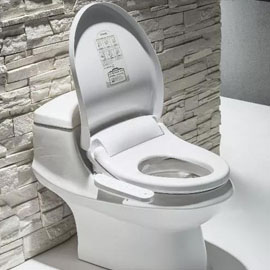
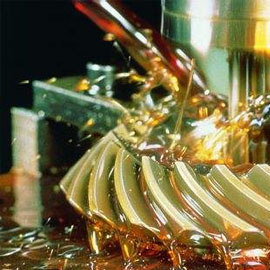
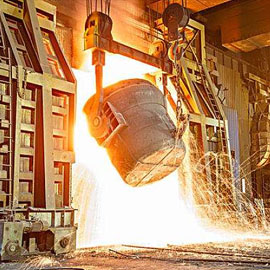
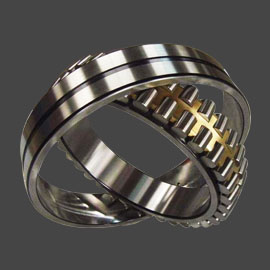
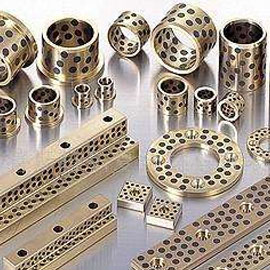
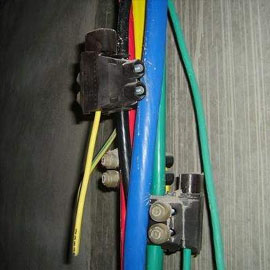
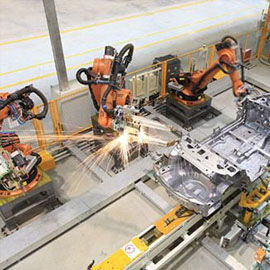









 86-13380181800
86-13380181800

 86-13380181800
86-13380181800